Golf Without Lessons: Ways to Improve Golf Game
Feel Stuck in a Rut Without Golf Lessons? Check Out Our Comprehensive Guide to Improving Your Golf Game… Even Without an Instructor.
Are you serious about improving your golf game but don’t have the time or the funds to take golf lessons?
This is a common struggle for enthusiastic weekend golfers. When you love to challenge yourself and work towards personal progress, it’s frustrating to be held back by practical considerations. The good news is that you absolutely can play better golf without private lessons.
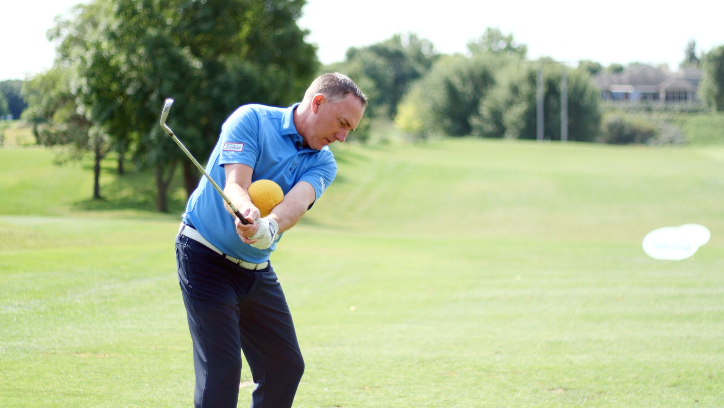
But in order to do that, you have to know:
- What skills are most important to learn
- Essential drills for practicing game-changing techniques
- Training aids that actually do what they promise
- How to separate great resources from bad information
I’m going to walk you through everything you need to know to become your own coach and finally see improvement in your golf game.
How to Improve Your Golf Game Without Taking Lessons
No matter your skill level, many struggles you have as a golfer come down to just a few key issues. Two of those issues—grip and swing—require some in-depth discussion. I’ll get to those in a moment.
But first, here are some quick tips and drills you can start working on today, including a drill that doesn’t require you to hit a ball.
The Simplest Secret to Improving Your Game: Ball Position
One of the fastest ways to improve your golf game is to improve ball position. You definitely don’t need a golf lesson to understand this concept. The placement of your golf ball determines whether you strike the ball at a downward angle or an upward angle.
Think of the arc shape you create when you swing your club. The lowest point of that arc happens somewhere near your ball.
If you hit the low point before the moment of impact, then your clubhead is back on an upward trajectory when it makes contact with the ball. This is what we call “hitting up on the ball.”
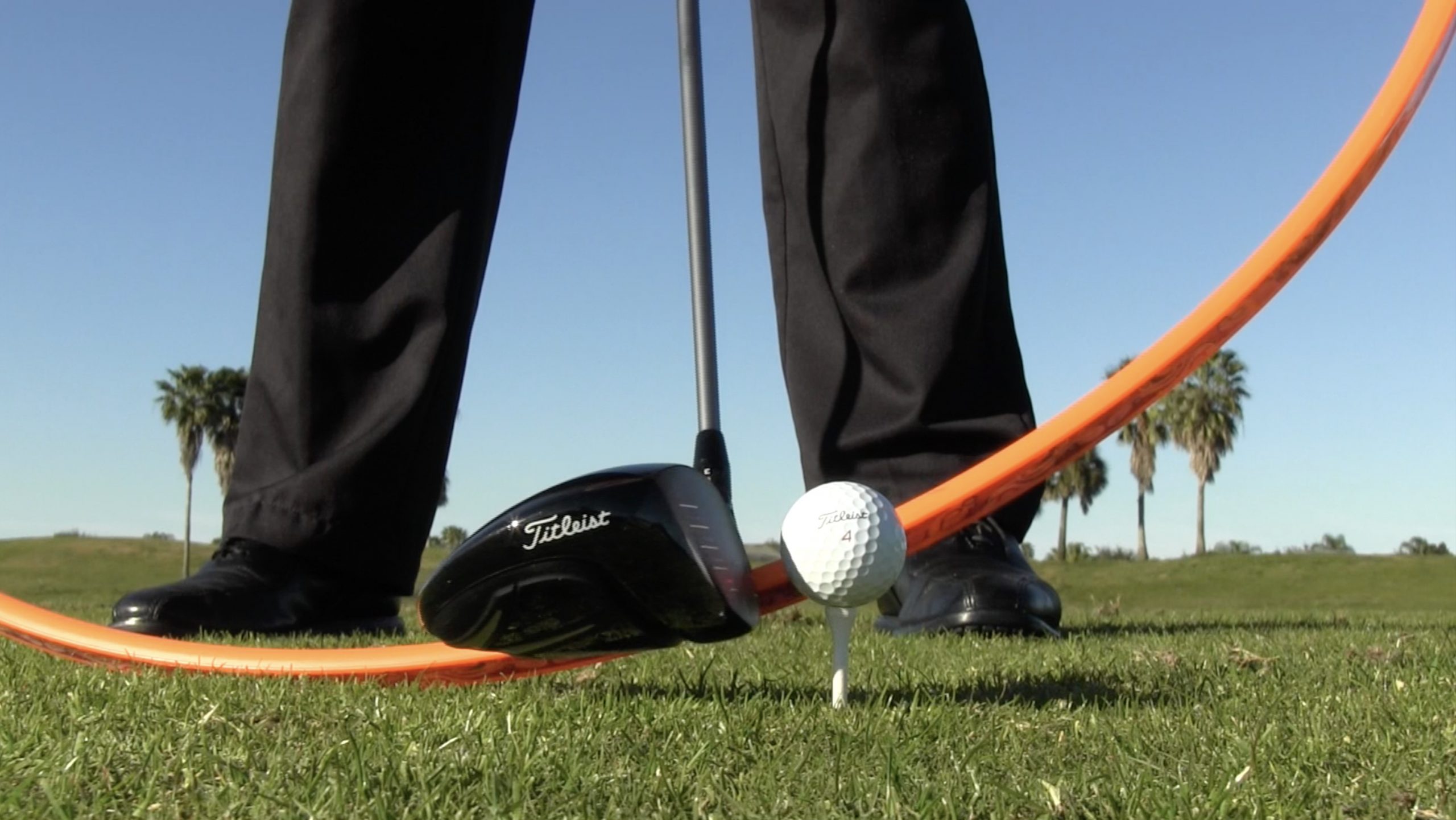
If you hit the ball before the low point, then your clubhead is still traveling downward at impact. We call this “hitting down on the ball.”
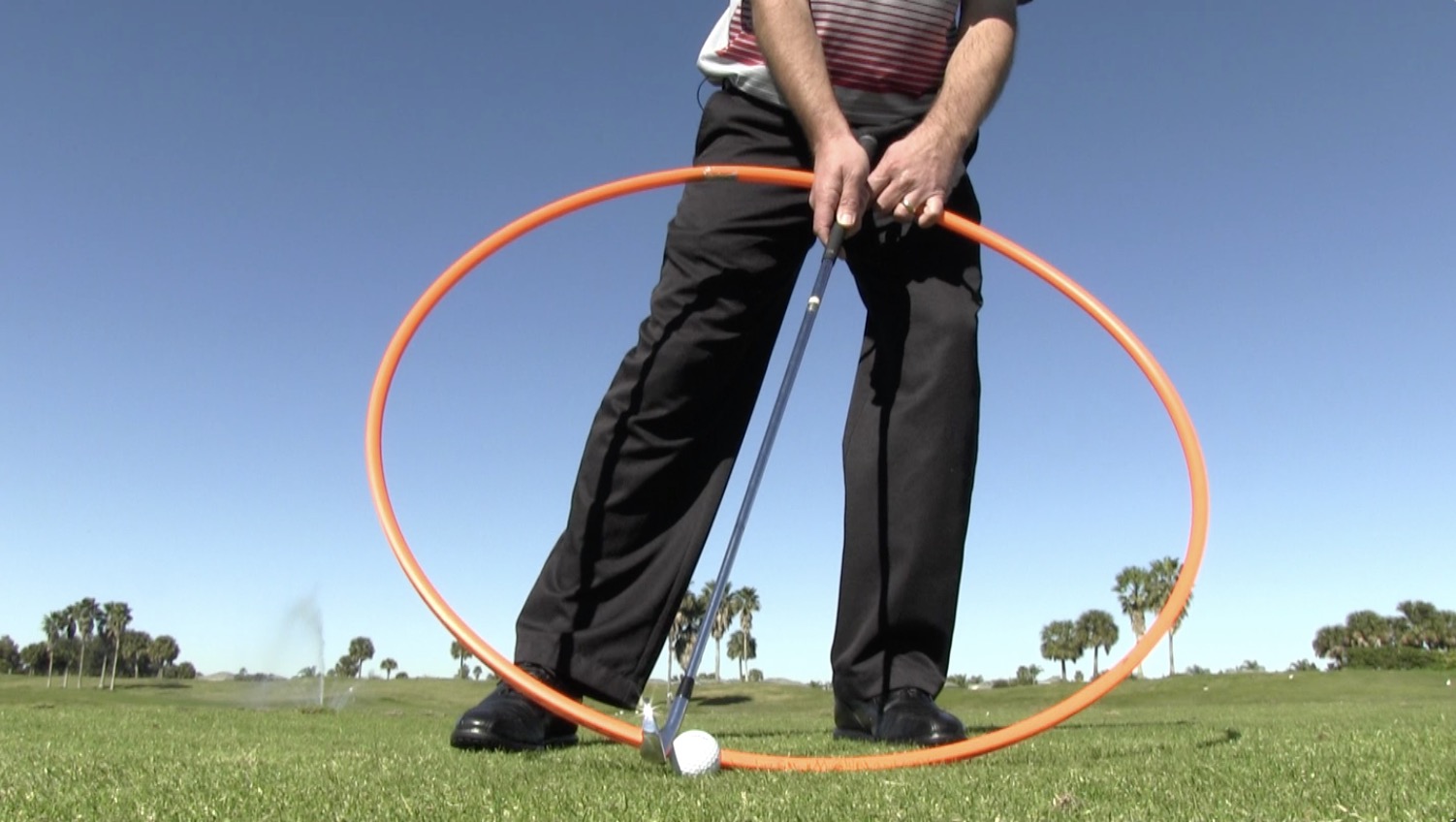
For driver shots, you want to hit up on the ball. For irons, you want to hit down. How do you make this happen? How do you control the low point of your swing?
You don’t. You control ball placement instead. The low point naturally occurs at about the center of your stance. With that in mind, you should position the ball slightly forward for driver shots and more toward the center for iron shots. Here’s a quick trick for getting perfect placement:
- Driver Shots: Stand with your feet together and the ball positioned in the exact center of your stance. Then, step the lead foot out just a little—about 2—3 inches. Take a bigger step back with your trail foot. The ball should be more forward in your stance, just off the inside of your lead arm or lead heel.
- Iron Shots: Stand with your feet together and the ball positioned in the exact center of your stance. Step the lead foot forward and the trail foot back in equal distances. Now your feet are farther apart, but the ball should still be dead center.
It seems simple, but correct ball position makes a world of difference.
Practice Drills to Improve Your Golf Game
At the end of this article, I’ll share a wealth of resources for finding practice drills. But here are two right off the bat that are especially perfect for golfers who want to improve their golf skills without lessons. You don’t even need a ball for the first one, so you can practice safely in your own garage.
Right, Left Drill: Master Tempo and Build Speed
What golfer isn’t dying to improve their swing speed? Speed equals distance, and better distance is a pretty great way to take a few strokes off your next round.
However, a lot of casual golfers don’t realize how essential tempo is when it comes to ramping up clubhead speed. They may hear advice to “improve tempo” every now and then, but they don’t really know what it means or why it matters.
Here’s a quick primer. Tempo is your rate of acceleration over the course of your swing motion. You want to build that speed gradually. I think of it like merging onto the interstate. You don’t immediately gun it on the ramp, and you don’t timidly inch your way into traffic. You accelerate steadily to match the speed of traffic by the time you merge.
That’s what you work on when you practice tempo: gradually accelerating so you have maximum clubhead speed at impact. The Right, Left Drill helps you accomplish this.
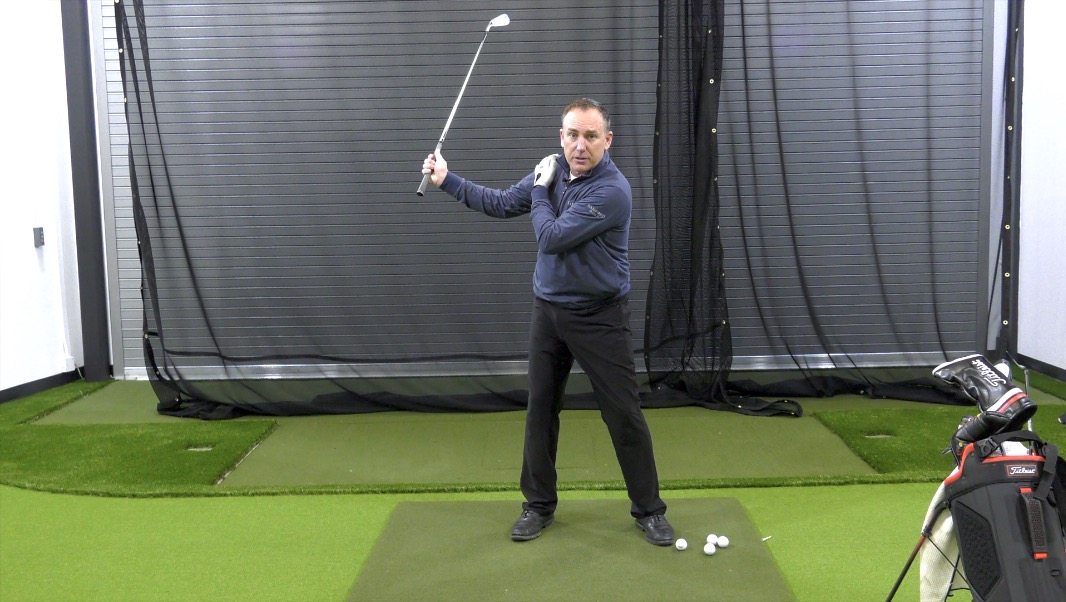
(Note: These instructions assume you are right-handed. Lefties can simply reverse the instructions.)
- Take your golf setup without the ball.
- Take your regular golf swing. As you swing back, say the word “right” to yourself. Feel the pressure in your feet shift to the right foot as the clubhead rises over your right shoulder.
- As you swing down and through, say the word “left.” Feel the pressure shift back into your left foot as the clubhead navigates up over your left shoulder.
- Repeat continually without pausing between swings.
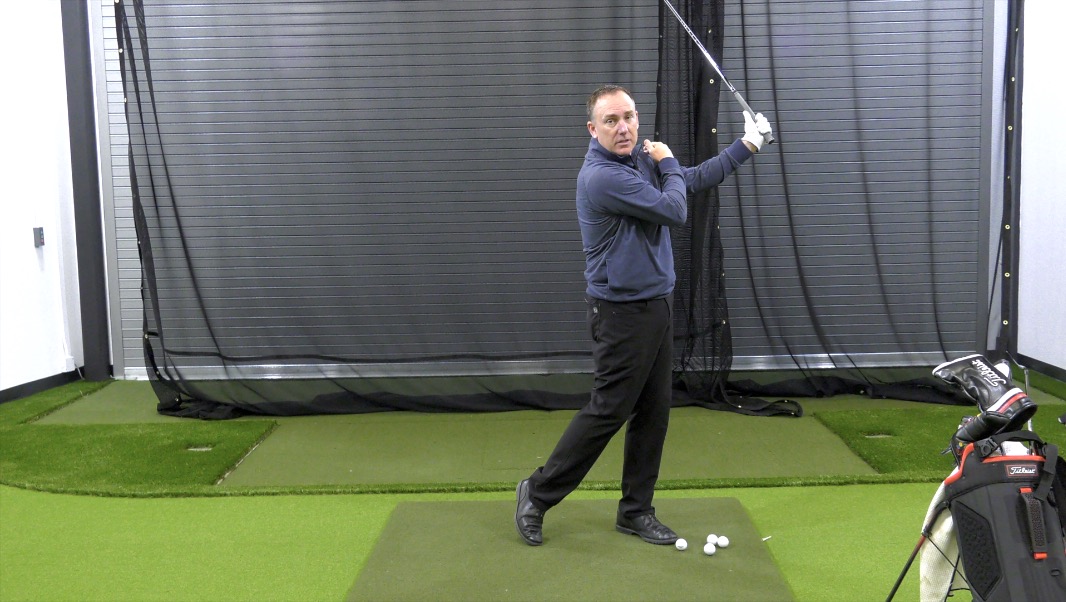
If you’re at the driving range or have a net at home, you can take a few of these swings to find your momentum, then step forward and hit the ball. But if you’re not somewhere you safely can hit the ball, no problem. Even without hitting a ball, this drill is powerful for creating a physical sense of tempo. Don’t forget to actually say the words “right, left.”
4=3 Drill
This drill is challenging, but you can definitely handle it. More to the point, it’s extremely helpful for anyone hoping to make a big improvement to their golf game.
The 4=3 Drill helps you practice important skills such as swing motion, balance, ball position, and tempo. Even better, you’re able to work on these elements of your swing without thinking too hard about it.
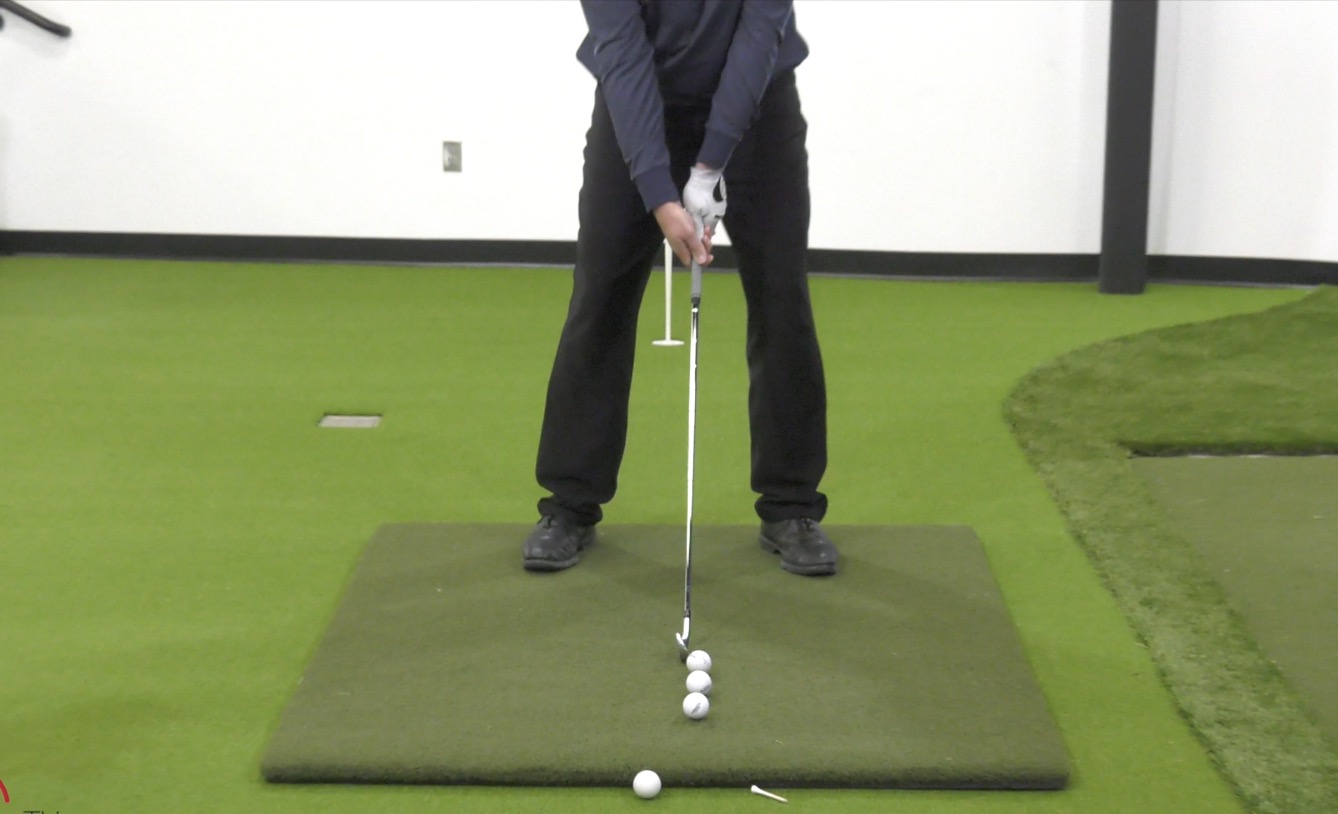
I call this the 4=3 Drill because you make 4 swings and hit 3 balls. I like to use a 6-iron for this one. Here’s how it works:
- Line up three golf balls. There should be enough distance between them so you can easily hit them one at a time.
- Imagine a fourth ball at the front of the line. Take your golf setup as though you are about to hit that imaginary ball.
- Take a practice swing.
- Immediately step forward and hit the second ball.
- Then the third ball.
- Then the fourth ball.
Now, this is important: Once you start swinging, keep swinging. There should be no pause between balls. You’re just stepping forward and swinging until there are no more balls to hit.
You do not have to do this drill at full swing speed. In fact, I recommend taking it a little slower when you first try it, then building speed as you become more comfortable.
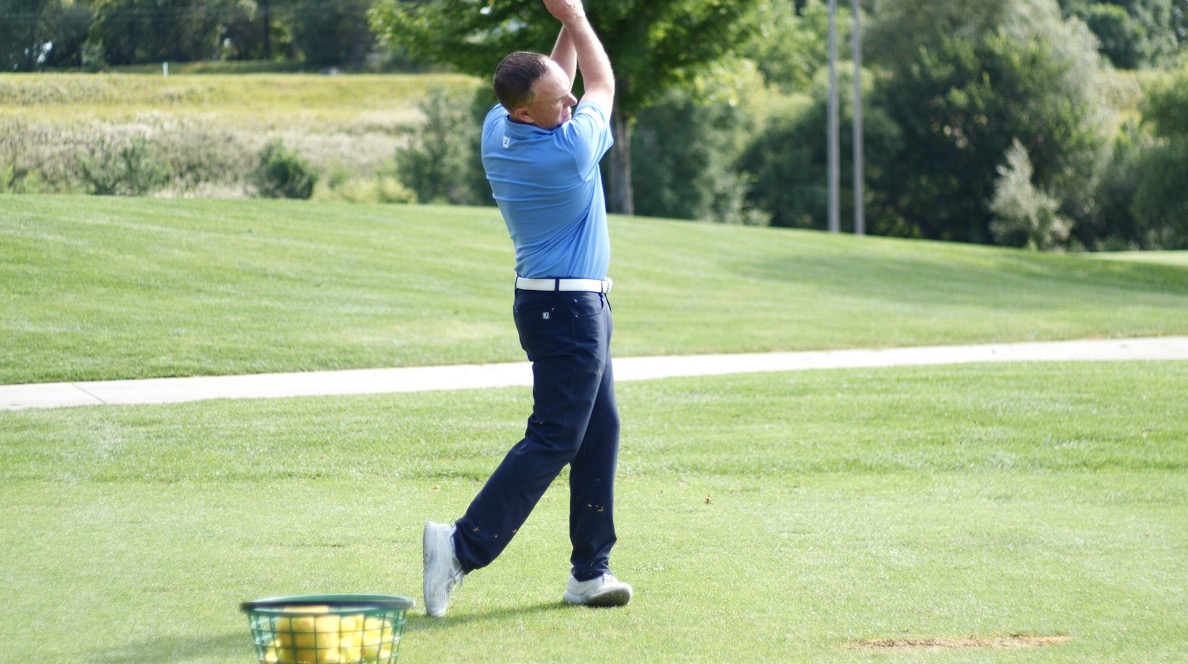
Tips for Gripping the Club
Like ball position, golf club grip is a seemingly minor detail that has a big impact on your golf game. If you don’t have a proper golf grip, your swing suffers.
To make matters worse, you’re unlikely to get helpful grip advice on the golf course. One buddy tells you your grip is too strong, the other tells you it’s too weak. You watch the best players on the PGA Tour and you don’t see a lot of consistency there, either.
Without the guidance of a trained professional, how are you supposed to know what proper golf grip really is?
I’m going to share everything you need to know to evaluate your own grip and make necessary adjustments. First, let’s cover the basics.
Understanding Grip Pressure
Let me guess. You’ve got one friend who grips the club like she’s strangling it, and she hits incredible drives off the tee. Then you’ve got another buddy who believes in holding his golf club gently, like he’s cradling a bird. And he gets the same result.
So, how can there be such a thing as “proper golf grip”? It doesn’t seem like grip pressure actually makes a difference.
Well, it does and it doesn’t. Grip matters quite a bit, but it’s a personalized technique. Your correct golf grip may not be someone else’s correct golf grip.
What matters most is that your grip strength is consistent. As long as you use the same grip pressure every time you pick up the club, you can learn how to get the best shots you’re your preferred grip.
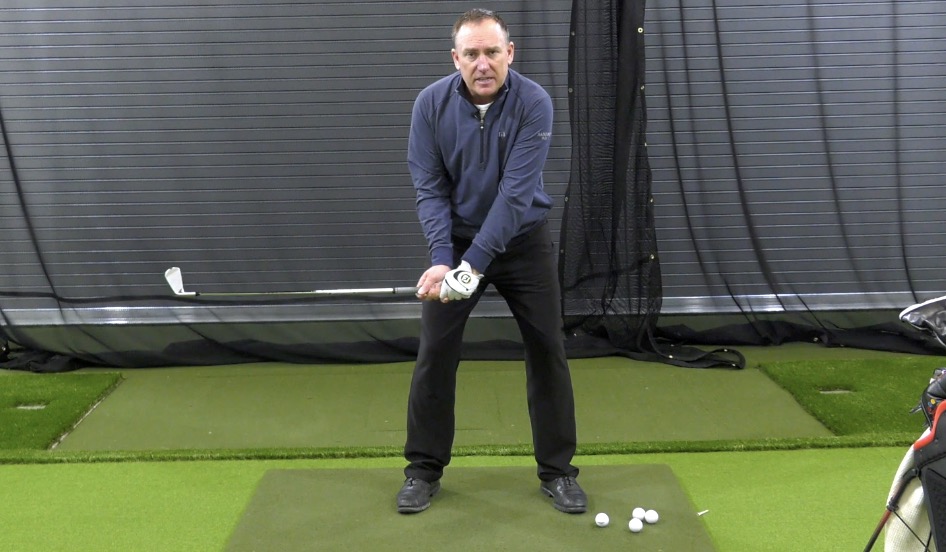
Here’s a quick tip: Grip problems happen when your forearms are tight. To make sure you’ve got relaxed forearms at setup, waggle the club back and forth from the wrists. If your club swings easily, you’re doing great. If there’s resistance, it’s time to try a looser grip.
The Right Golf Grip for You
Of course, grip pressure is not the only aspect of your golf grip. You also need to examine the type of golf grip you use.
Once again, there is no one-size-fits-all solution here. But certain grips do work better to meet specific needs.
If your arm strength is below average, consider trying the Ten Finger Grip. Here’s what it looks like:
- Use your lead hand to grip the top of the handle.
- Take your trail hand and wrap those fingers around the handle immediately below the lead hand.
- The bottom hand should cover the thumb of your top hand.
The Overlap Grip is popular—and effective—for golfers of all levels. I especially recommend this one to serious and competitive golfers. The overlap grip helps maintain stability by preventing hand separation. It looks like this:
- Your lead fingers grip the top of the handle.
- Wrap your trail fingers around the handle just below the lead hand.
- Your bottom hand should cover the thumb of your top hand.
- Overlap the little finger of your trail hand over your lead hand so it rests between the index and middle fingers.
If you have small hands or shorter-than-average fingers, you might get a more secure hold with the Interlock Golf Grip. This grip looks a lot like the overlap grip, with one notable difference. In this grip, you untuck the index finger of your top hand out from beneath your trail fingers. Lock it into place between the little and index fingers of your bottom hand.
If you’ve been using the same grip for years, it might be worth testing your other options. You might discover more power or control with a completely new approach.
Tips for Improving Your Swing
Once you master those deceptively simple details like ball position and grip, you’re ready to take a look at the swing itself.
If you’ve dreamed of taking golf lessons, it’s probably because you’d love to get an extra set of eyes on your swing motion. It can be incredibly hard to judge what we can’t observe. And the golf swing can be a remarkably complicated issue.
Nevertheless, I can give you a couple golf tips for improving your swing motion on your own.
Swing Shape
First, let’s talk about swing shape. What does a golf swing actually look like?
In its most basic form, a golf swing is a circle. At the top of your swing, your hands and club are above your trail shoulder. Then you swing through, and your hands and club finish at the top of the opposite shoulder. You are bringing the clubhead full circle, so to speak.
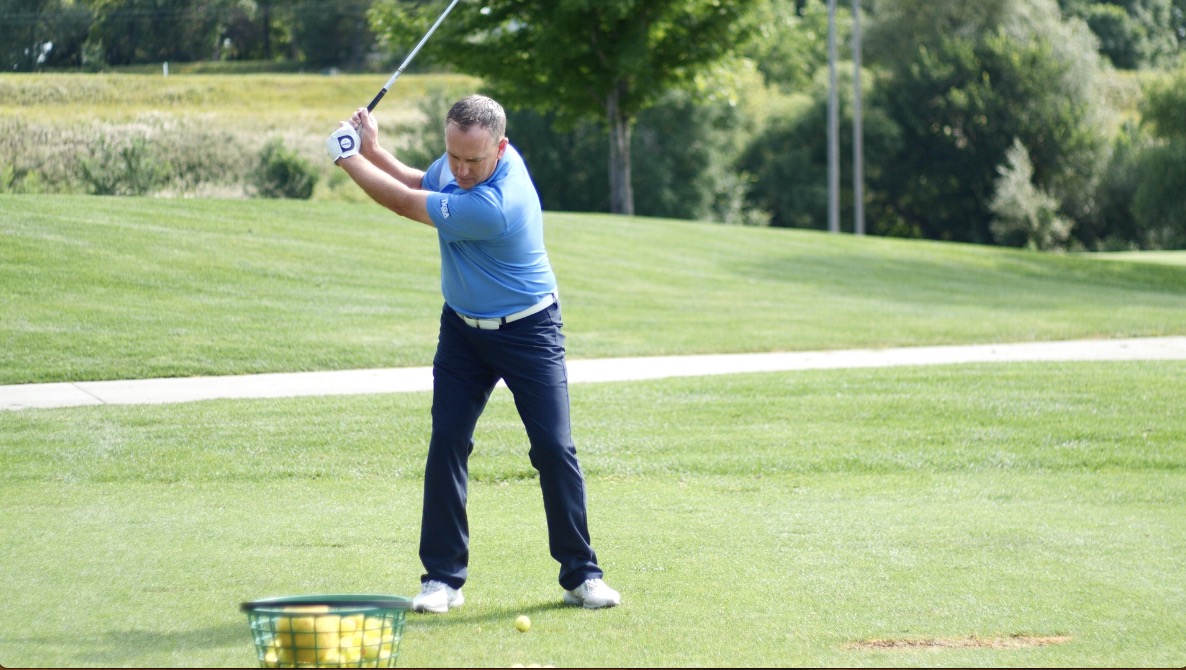
I point this out because when you can visualize this circle, you can avoid a very common error in the game.
You see, it’s important to maintain a true circle shape, no matter what angle your circle is. Some golfers create a low-angle circle. They bring the club just below their trail shoulder, then guide it around to just below their lead shoulder. Other golfers create a more upright circle, from above the right shoulder to above the left shoulder.
It doesn’t matter which angle you prefer. What matters is that you create a true circle. There should be balance and symmetry in your swing shape.
This means if you swing the club above the trail shoulder, you need to finish with the clubhead above the lead shoulder. Don’t bring the clubhead high at the top of your swing and finish with it low. That stretches the circle and screws up a perfectly good swing.
Balance
Never underestimate the importance of balance in your golf game. If you can improve your balance, you can enhance your swing.
Now, I am not saying you have to swing slower. So often, we associate better balance with slower, more measured movements. Sometimes golfers neglect balance in favor of building speed, because a faster swing speed achieves longer drives.
But the reality is that balance gives you more control and more power. And if you take the time to improve your balance even as you swing faster, you’ll come closer to achieving the ultimate dream: distance and accuracy.
So, how do you test and practice balance? Well, there’s one super simple checkpoint.
When you finish your swing, your knees should be touching.
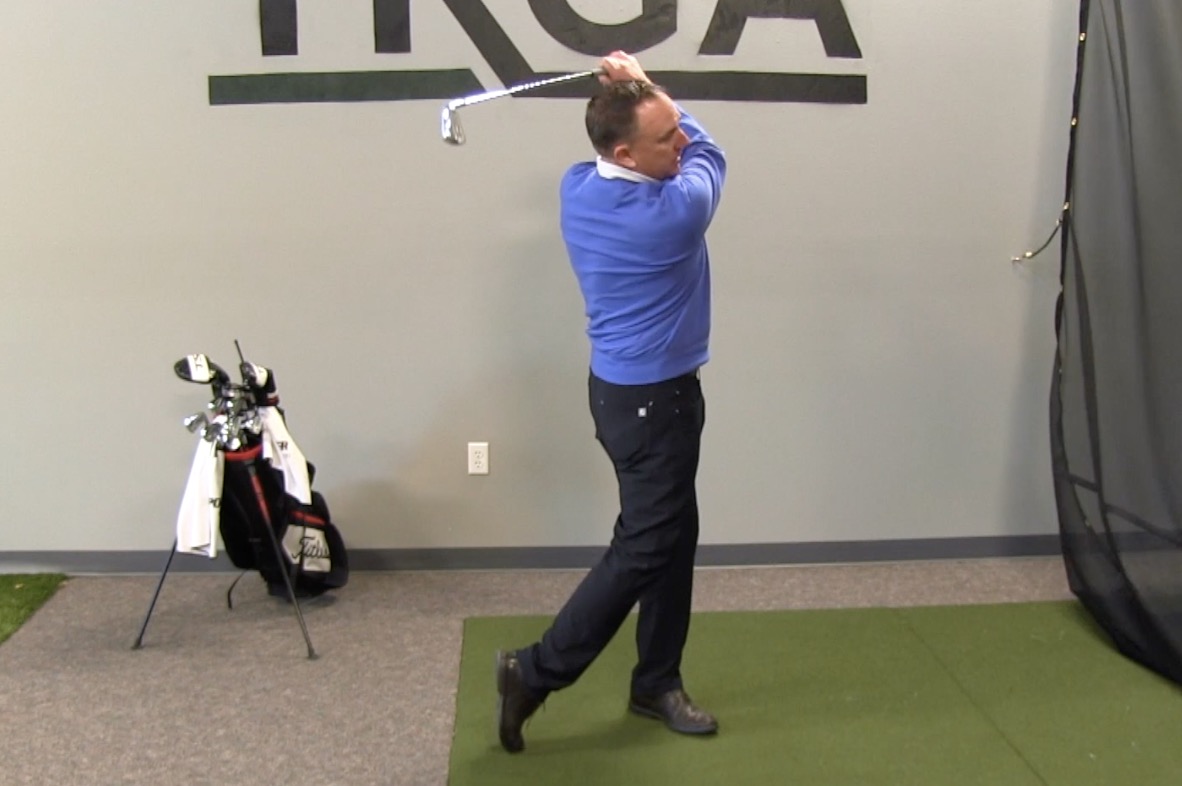
That’s it. You can even drill this at home without hitting a ball. Practice your golf swing, making sure that your knees are always touching at the finish. Drill that technique over and over again until you touch your knees without thinking about it.
It almost seems too easy to work, but I’ve seen a lot of students improve their golf game with this simple detail.
Best Places to Learn More About Golf Techniques Without Lessons
Okay, I’ve gone over a few of my own favorite tips for self-directed golf practice. But what do you do after you’ve mastered these golf tips? How do you continue advancing your golf game?
You already know there’s no shortage of golf advice out there. But you’ve probably also noticed that many easy-to-find tips are conflicting or come from questionable sources. How do you know who the real experts are? And how do you find the insights that are right for you?
Here are five resources I personally use for continuing golf education. These are places I send my golf academy students, and some of these are resources I still use for my own information. They are all trustworthy and have great information for golfers of all skill levels.
#1: The Best Golfer at the Driving Range
To be clear, I’m not saying you should follow a stranger around, prodding them for golf tips. But what you should do is this:
The next time you go to the driving range, take about thirty seconds to observe the other golfers. Find the person who clearly knows what they’re doing . . . someone who possesses golf skills you would like to develop.
Then, set up next to that person.
Now, when you do this, you might actively discover some differences in their swing motion or setup. But this advice isn’t just about observing and emulating a talented golfer.

You see, we as human being have an interesting talent for subconsciously locking in to whatever is going on around us. If you’re hitting balls next to someone who’s really good, your senses start picking up on details like rhythm, tempo, and the sound of a clean, solid hit. Inevitably, your mind starts incorporating these elements.
Of course, this practice will not immediately make you as good as that other golfer. But it has an effect similar to the way your friends rub off on you. Hanging out with a political strategist will never make you a political strategist, but it will have you thinking about politics on a new level.
#2: Books to Improve Your Golf Game
With so many free instructional videos out there, it’s easy to neglect the written word. But I can tell you from personal experience, a great book on golf can transform your relationship with the game.
Here are my top recommendations:
- Science of the Slice. This free ebook from USGolfTV is perfect for anyone who is still struggling to get rid of the slice, a that plagues many amateur golfers. This book digs into the science of golf, revealing previously unknown secrets about what causes the slice. You also get surprisingly simple tips that help you eliminate this dreaded golf from your . You can claim a free copy of Science of the Slice here.
- James Sieckman. If you’re looking for help with your short game, I cannot recommend James Sieckman highly enough. Look for Your Putting Solution and Your Short Game Solution.
- Harvey Penick. His books are deeply enjoyable and thought-provoking for anyone who gets into the theory and philosophy of golf. A couple well-loved Penick classics include Little Red Golf Book and For All Who Love the Game.
- Bob Rotella. I love Rotella’s books for digging deep into the mental game of golf. If you’re interested in working on your mental performance, look for Putting Out of Your Mind or Golf is Not a Game of Perfect.
#3: The Best Players in the Game
Now I’m going to tell you to move your observations beyond the driving range and take some time to watch the best players compete in actual events.
And I’m not just talking about watching the Masters on T.V. I’m talking about physically attending a golf event. If you live in an area where you have access to a PGA or LPGA event, a college event, or even a respectable amateur event, go.
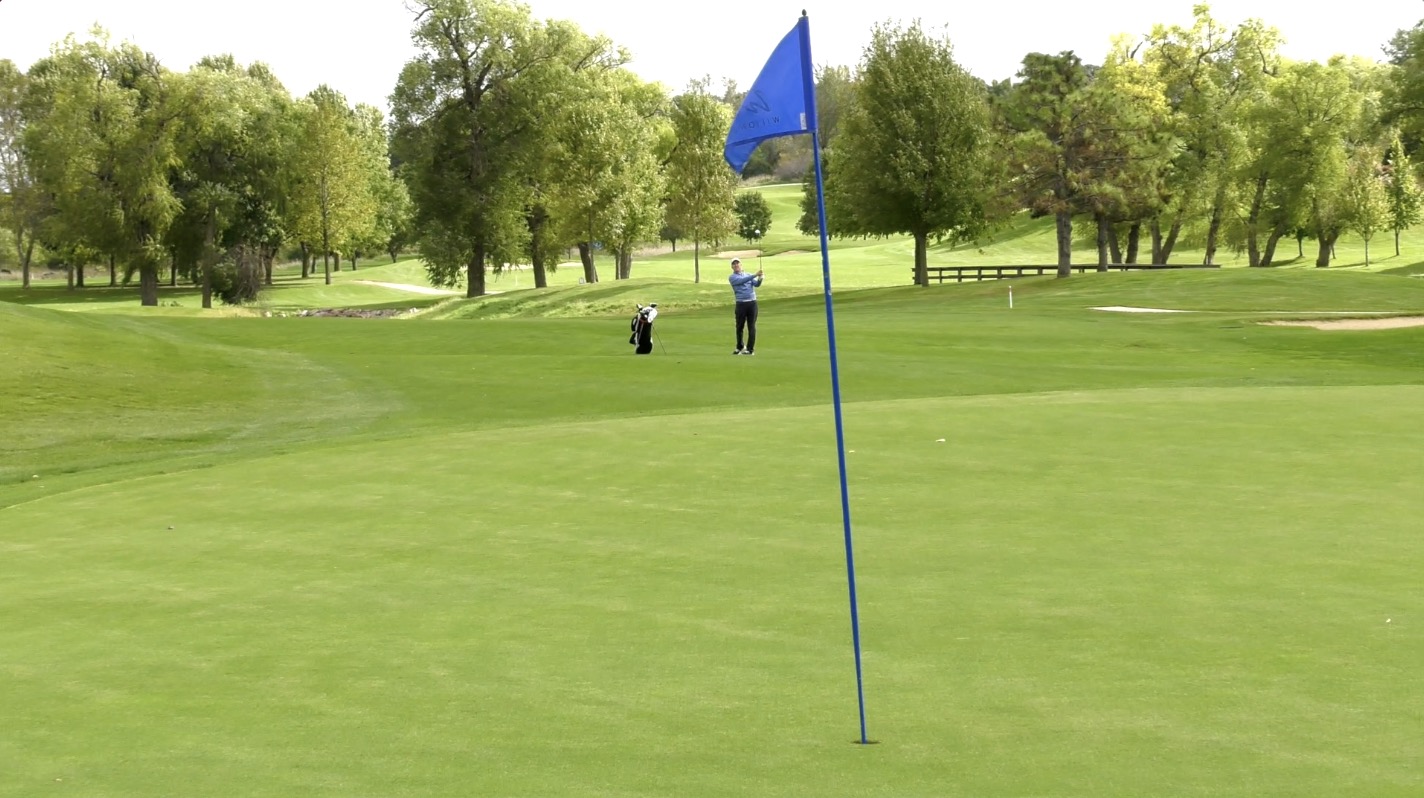
In fact, go early. Get there in time to watch the golfers warm up. Notice the drills they run, which clubs they use, if they practice with training aids.
Then, observe them closely during competition. Do they always use a driver? Or do you see them lay up on certain shots? Are they walking off chip shots? What about putts? What do they do to get a feel for the greens?
As with any skill, you learn a lot about golf just by watching top performers practice and compete. Get out to an event, take notes, and let what you learn guide your own practice.
#4: Online Instruction
This one is tricky. There is so much information out there, and it truly is a mixed blessing. While there are endless resources for improving your golf game without lessons, they’re not all reliable resources.
Before you follow anyone’s YouTube advice, take a minute to research the instructor. Does it seem likely this person knows what they’re talking about? More importantly, is this someone whose education and professional experience equips them to give you safe golf tips?
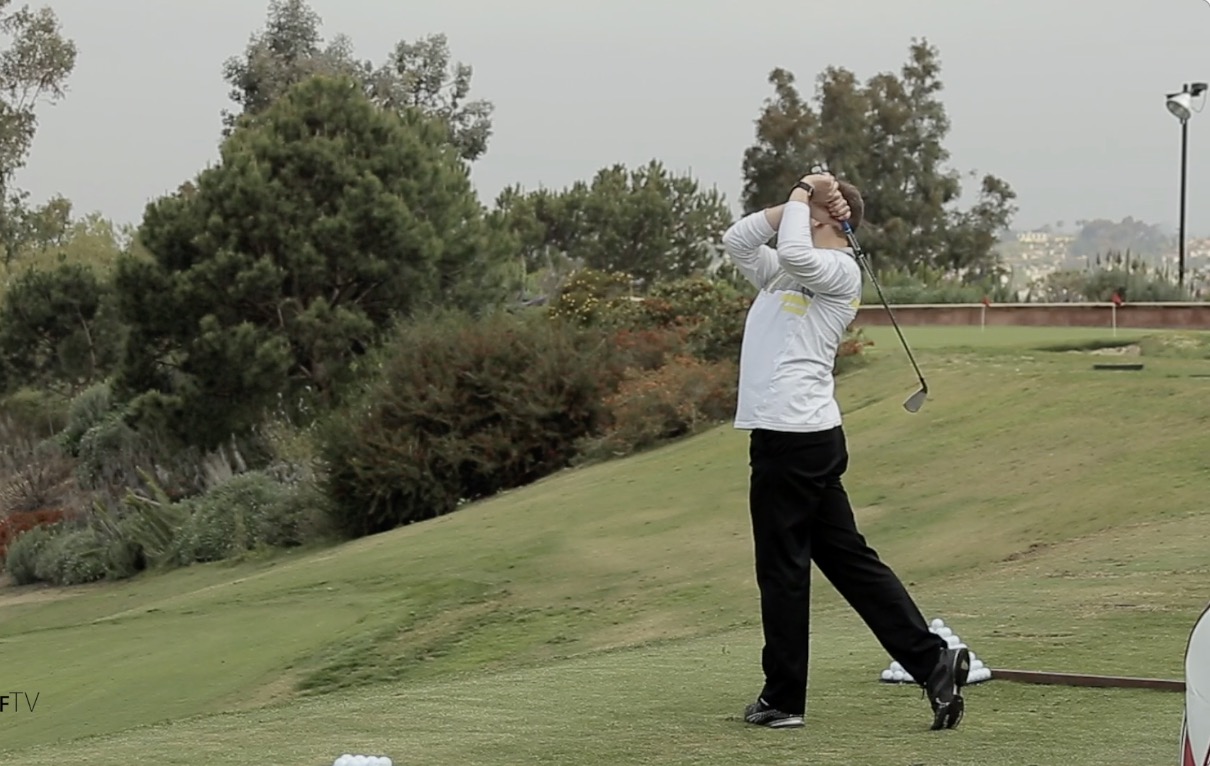
Over time, you’ll find a few trusted resources for online golf tips. (Hopefully we’ve made your list!) But if you could still use a nudge in the right direction, we recommend:
Tour Draw. This is a video instruction program designed to help you get rid of that nasty slice and consistently a hit nice, high draw. All information comes from new discoveries based on the most advanced golf technology.
GreatGolfTipsNow.com. This is a free video series we’ve produced for you. It’s especially noteworthy in an article about improving your golf game without lessons, as this series includes several secrets we typically reserve for our students.
USGolfTV.com. You’re currently reading a USGolfTV article. We have an extensive collection of articles and videos to help you play better golf. Peruse our blog right here on the website, or subscribe to our YouTube channel.
#5: Training Aids
I have to admit, I’m not a huge training aid person. Several of these tools make false claims and prey on amateur golfers who are eager to improve their golf game.
That said, some training aids are genuinely effective . . . especially for golfers who don’t have the benefit of golf lessons. The right training aid provides helpful visuals that allow you to see your own habits and technique in a new light.
Here are some favorites I use with my own students.
- The Rimer Short Game Trainer. This training aid features an alignment ruler with an adjustable slider that helps you set ball position or measure your putting stroke. There are several ways to use this tool to practice essential skills such as ball position, aim, and alignment.
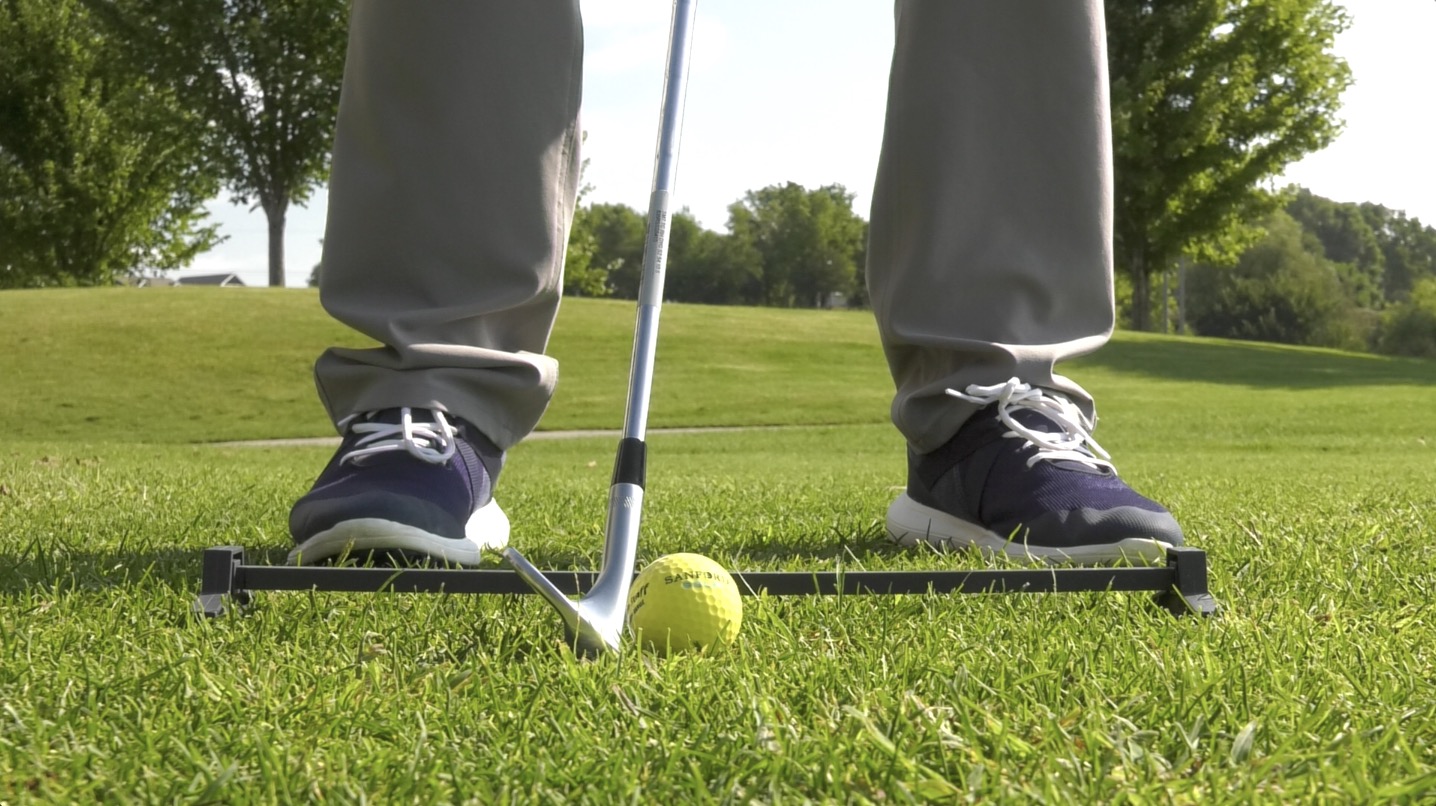
- The Tour Striker Smart Ball. The smart ball was actually invented by a buddy of mine from college. Martin Chuck is a fellow golf instructor who designed this training aid to help golfers better understand the connection between arm and body movement in the golf swing. Check out this article to see how the smart ball can improve your golf game.
- LiveView. If you’re serious about golf or you love technology, I recommend checking out LiveView. This portable camera syncs with an app on your mobile device so you can watch your own swing in real time. There are a lot of features I love, including slow motion instant replay and the option to draw coaching objects on the screen. Plus, the video presents a mirror image of your swing, making it easy to correct errors in real time.
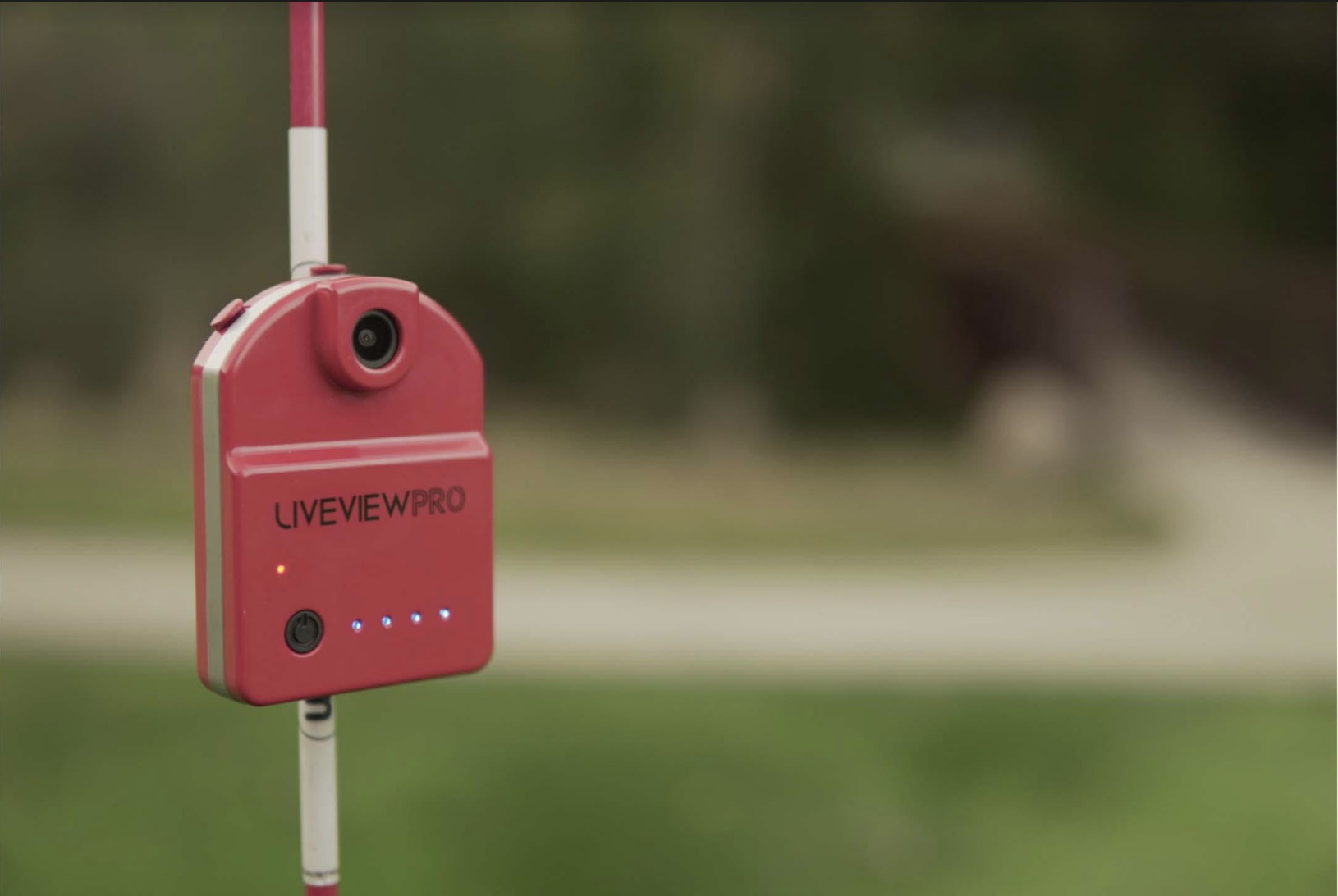
A lot of training aids come with empty promises. But the good ones provide brand new opportunities for enhancing the way you play your golf game.
How Will You Work Towards a Better Golf Game?
As a golf instructor, I know there is tremendous value in gaining the insight and advice of a professional. Whether you take private or group lessons, there is nothing like having a coach there to correct your errors in the moment and clear up confusion.
But I also know lessons simply isn’t an option for everybody. And if you can’t get professional guidance, the tips in this article will go a long way towards helping you play your best golf.
What about you? Do you have any tips of your own to share? What tricks have you used to find reliable advice without an instructor? Share your own insights or questions in the comments. We like to hear from you, and you might be able to help a fellow golfer.
For more in-depth golf tips, visit us at GreatGolfTipsNow.com. This new video series is completely free and packed with detailed advice to help you play better golf!


Regarding your comment on balance at the finish, I have found that I have a better chance of achieving that if I am balanced at address. In order to check this, I lift my toes just before taking my final position. Prior to doing this, I felt like I was falling into the ball after the swing. Thanks.
Robert, very interesting…you hit the nail on the head, if it works for you, this keep doing it! Great stuff….thanks for posting.